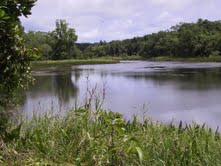Case-study /
Community Climate Alliance to Protect Upland Watersheds of Babeldaob Island, Palau


Image: Umiich Sengebau
The Republic of Palau comprises the western-most group of the Caroline Islands in Micronesia lying 800 miles equidistant from the Philippines to the west and Papua New Guinea to the south. There are 340 islands in Palau, of which Babeldaob is the largest. It has a total land area of approximately 300 square kilometres. Babeldaob watersheds and associated rivers and streams are an integral part of the island biologically rich ecosystems and provide important services to the people of Babeldaob. For generations, local communities have depended on the island’s water systems for drinking and as a way to irrigate taro patches. However, in recent years inappropriate land use and severe weather patterns have begun to endanger Babeldaob major water sources. Deforestation of the area’s upper watersheds and extreme heavy rainfall have led to catastrophic landslides, as well as increased runoff and heavier sediment loads in rivers and streams, while the government agencies charged with environmental protection are often under-funded, understaffed and/or under political constraint thus limiting their effectiveness. Not willing to sit back and allow their resources to further deteriorate, the Babeldaob communities, through their traditional and elected leaderships, have united to form the Babeldaob Watershed Alliance (BWA). The traditional and elected leaders are unifying the island’s communities and preparing them to meet the challenges of maintaining water quality and healthy habitats posed by climate change, population growth, continued development and increasing subsistence and commercial farming. The BWA has shown innovative ways of communicating their needs to Government, to partner communities, and to international audiences.
Contact information
Umiich Sengebau (fsengebau@tnc.org)
